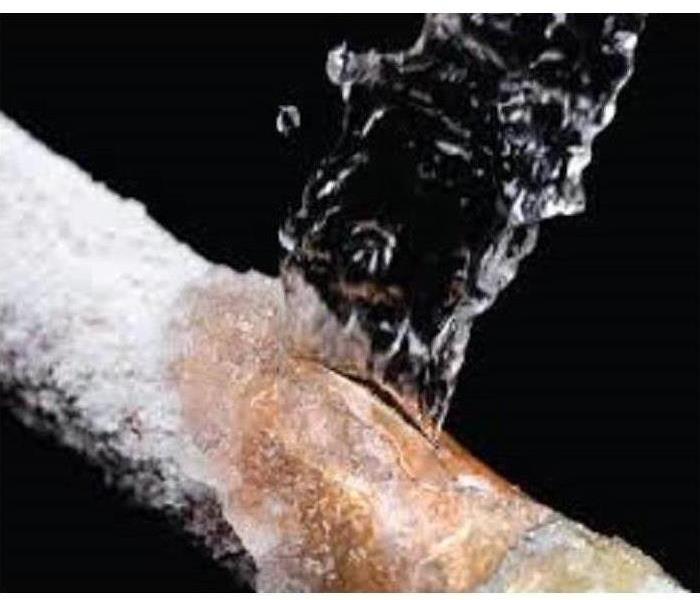How to Prevent or Thaw Frozen Pipes
1/23/2019 (Permalink)
With the colder weather officially upon us, now is an excellent time to learn more about how to avoid frozen pipes, and the subsequent water damage that can occur if those pipes expand and burst. Though frozen pipes are a common occurrence, they are highly preventable.
SERVPRO offers the following tips for preventing frozen pipes and mitigating potential damage that they can cause.
- Insulate all the exposed pipes in your home. Especially where they may be unheated, such as the basement, attic, garage, crawl space, and under kitchen and bathroom cabinets.
- Keep the temperature the same during the day and at night. By temporarily suspending the use of lower temperatures in the evening, you can prevent a costly repair job if pipes freeze and burst.
- Close any inside values that supply water outdoors and open the outside value to properly drain excess water that may be in the pipes.
- In drastically cold temperatures, let your faucet trickle. While you may be concerned about wasting water, running water is less likely to freeze.
- Remove, drain, and store hoses used outdoors. Keep outside valves open so that any water remaining in the pipe can expand without causing it to break.
- If you plan to be away from home for an extended period of time, leave the heat on and set to a temperature no lower than 55° F.
Found a Frozen Pipe? Thaw It Out:
- If you turn on a faucet and only a few drips come out, suspect a frozen pipe. Typically, frozen pipes are found along exterior walls or where your water service enters your home through the foundation.
- Make sure the faucet remains on while treating the pipes, as the flowing water will help to melt the ice within the pipe.
- Apply heat to the section of pipe using an electric heating pad, an electric hair dryer, or by wrapping pipes with towels soaked in hot water. Do not use a blowtorch, kerosene or propane heater, or other open flame device.
- Check all other faucets in your home to find out if you have additional frozen pipes. If one pipe freezes, others may freeze too.
Should you experience water damage from a burst pipe, turn off the water supply as soon as possible, and call SERVPRO of the Quad Cities immediately. The longer you wait to call, the greater the chance of mold growth and unrecoverable property. SERVPRO of the Quad Cities professional technicians have the expertise to prevent or mitigate the devastating effects that water damage can have.






 24/7 Emergency Service
24/7 Emergency Service
